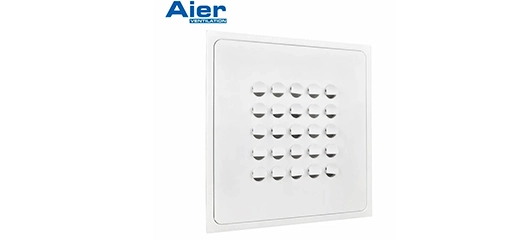
Ceiling diffusers are crucial elements in heating, ventilation, and air conditioning (HVAC) systems, significantly contributing to the effective distribution of air in both commercial and residential environments. These devices are strategically installed in ceilings to allow conditioned air to facilitate the even flow of conditioned air into a room, ensuring a comfortable atmosphere for those inside.
One of the primary roles of ceiling diffusers is to direct airflow in a controlled manner, avoiding the creation of hot or cold areas that can cause discomfort and reduce energy efficiency. An appropriately designed diffuser helps in achieving a balanced airflow throughout the space. This balance not only improves comfort levels but also lessens the strain on HVAC systems, potentially decreasing energy consumption and costs.
There are several types of ceiling diffusers available, each with its unique design and functionality. The most common types include square, round, and linear diffusers. Square diffusers are often used in commercial settings, providing a more aesthetic appeal, while round diffusers are typically found in residential applications. Linear diffusers are favoured for their sleek appearance and ability to cover longer runs of ductwork, making them suitable for contemporary architectural designs.
When selecting a ceiling swirl diffuser, several factors should be considered to ensure optimum performance. Airflow rate is a critical parameter—it's essential to match the diffuser's capacity with the specific requirements of the space. Additionally, the noise level produced by the airflow through the diffuser should be evaluated, especially in environments where quiet is paramount, such as offices and hospitals.
Another important aspect is the material of the diffuser. Common materials include aluminum and plastic, each offering different benefits. Aluminum diffusers are generally more durable and resistant to damage, while plastic options might provide a cost-effective alternative but may require more frequent replacements.
Proper installation and maintenance of ceiling diffusers are also vital for their performance. Ensuring that the diffuser is correctly positioned and unobstructed by furniture or decor enhances airflow efficiency. Regular cleaning is necessary to prevent dust accumulation, which can impede airflow and reduce indoor air quality.
In summary, ceiling diffusers play a crucial role in improving the efficiency of HVAC systems by ensuring effective air distribution, enhancing energy efficiency, and maintaining a comfortable indoor environment. By understanding the different diffuser hvac types and the factors to consider when selecting and maintaining them, professionals in the consumer electronics and air conditioning industries can make informed decisions that lead to improved performance and greater customer satisfaction.